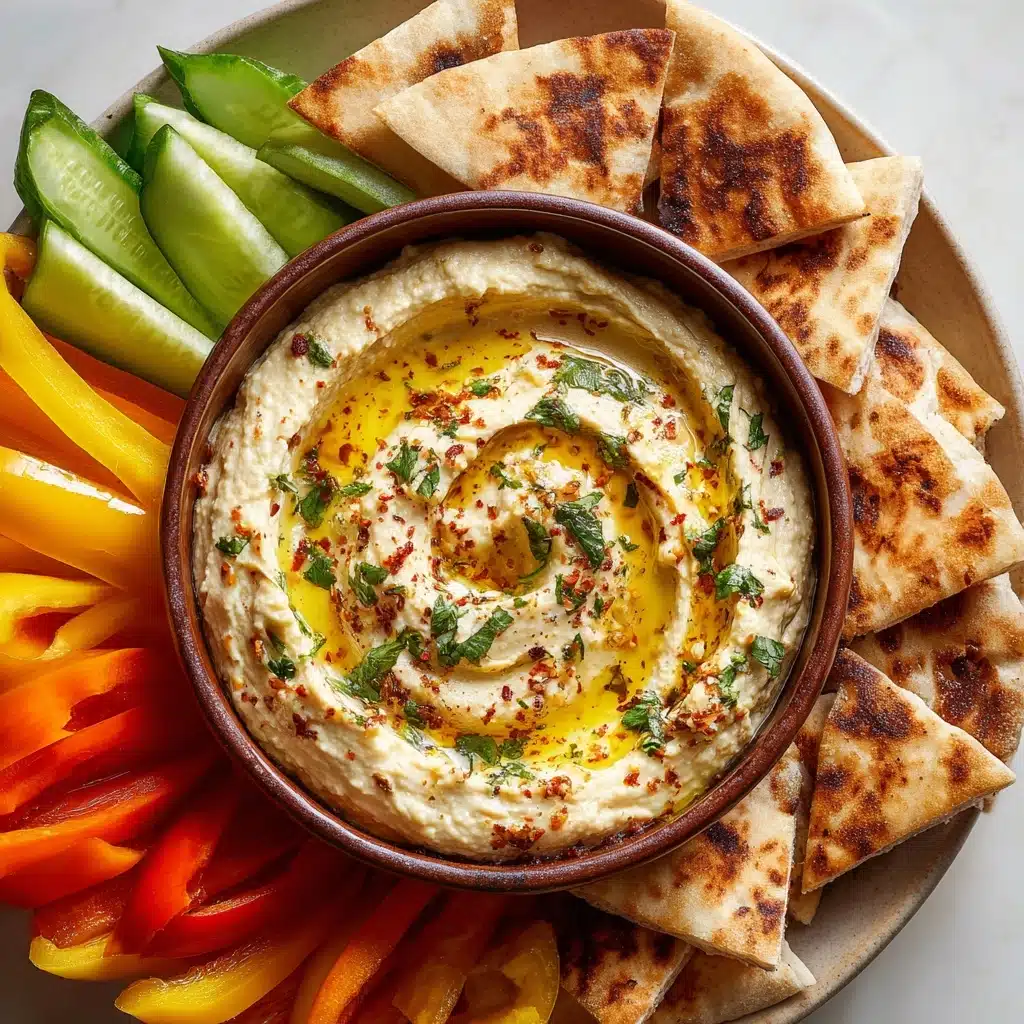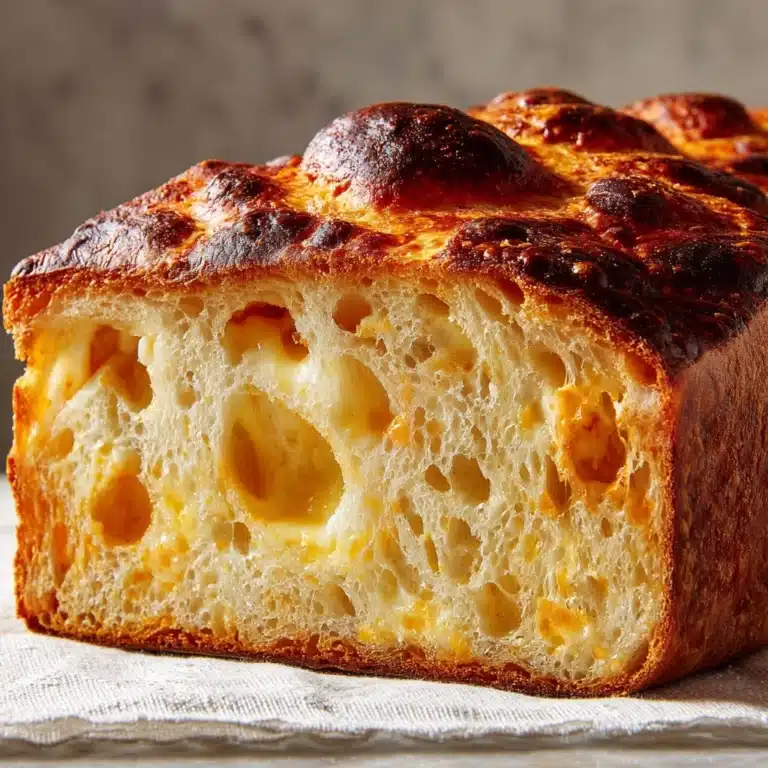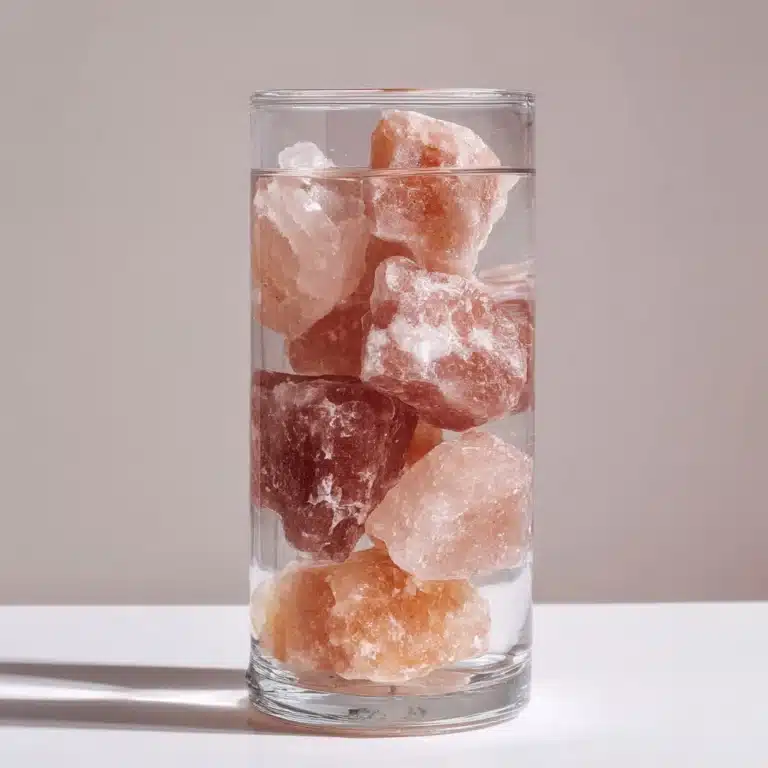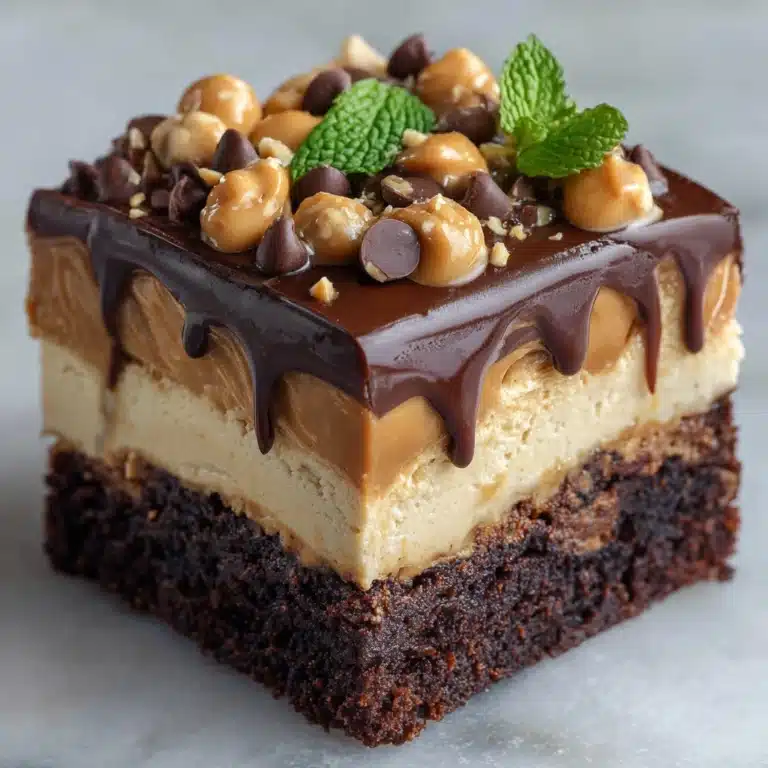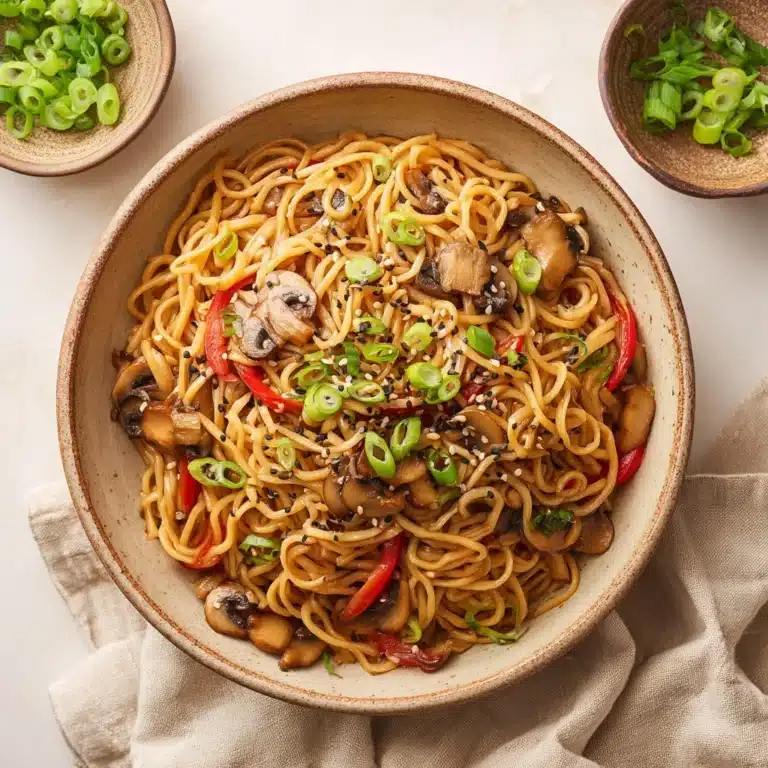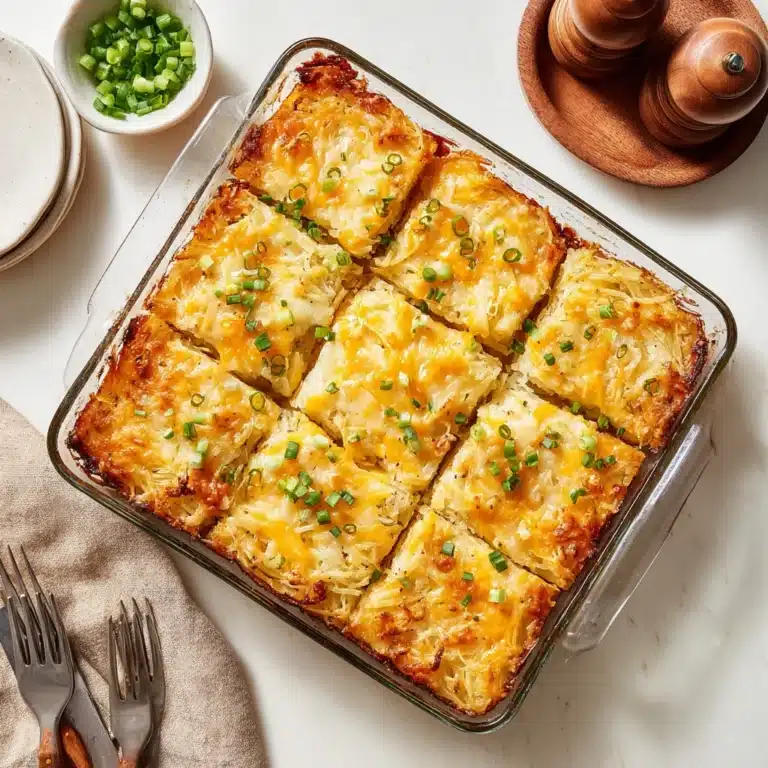If there’s one recipe I never tire of making, it’s classic Hummus. This velvety chickpea dip bursts with fresh lemon, the nutty richness of tahini, and just the right hint of garlic. It’s ridiculously easy to whip up in just 10 minutes, yet each bite tastes like something you’d find in a sun-drenched Middle Eastern café. Whether you’re scooping it with warm pita, smearing it onto sandwiches, or setting it out for a crowd, Hummus has a way of turning ordinary moments into something special.
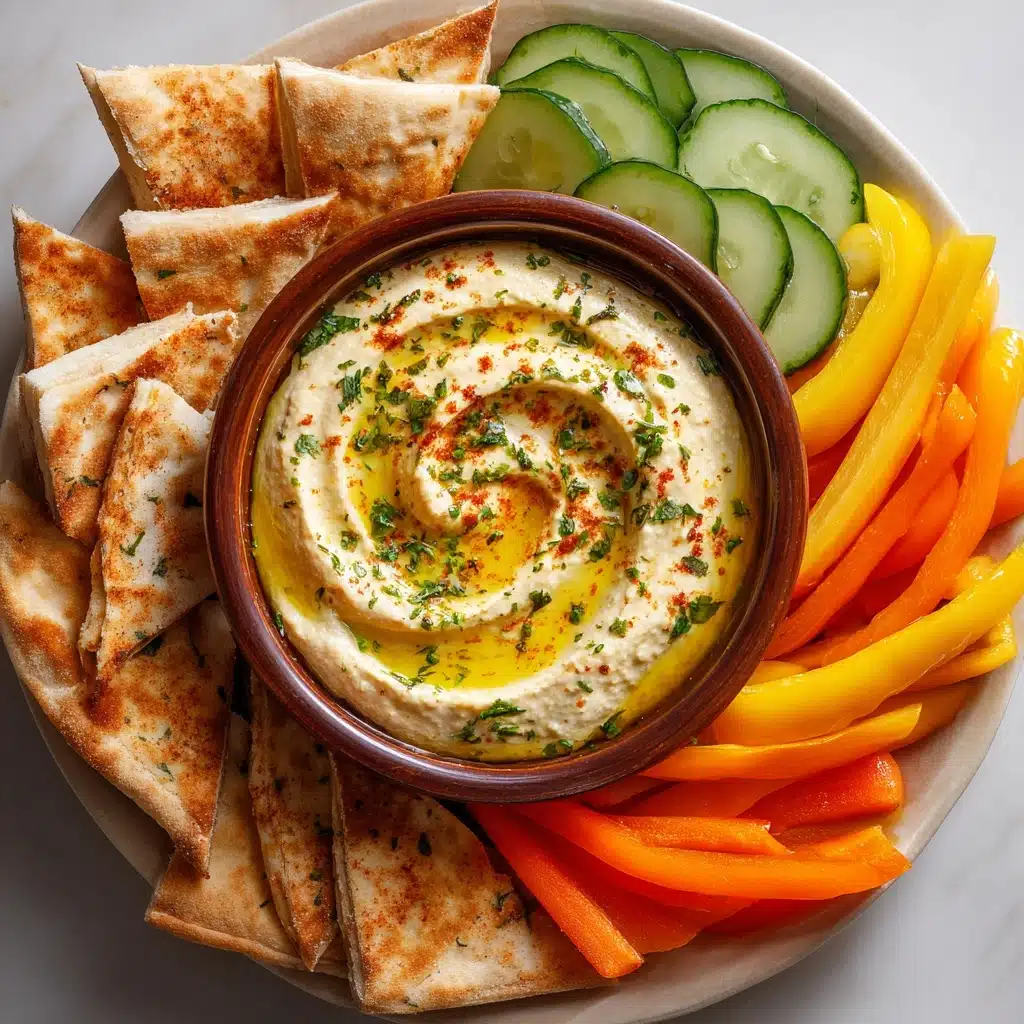
Ingredients You’ll Need
Here’s what makes homemade Hummus truly shine: simple ingredients, each one lending its own magic. There’s nothing complicated lurking here—every single item brings depth, flavor, or the dreamy texture that makes people swoon.
- Chickpeas: The heart and soul of Hummus, these create the beloved creamy base—canned beans keep things fast and easy.
- Fresh Lemon Juice: Adds bright, citrusy zing and balances the richness for a refreshing finish.
- Tahini: This roasted sesame paste delivers that luscious, nutty undertone authentic Hummus can’t do without.
- Minced Garlic: A little goes a long way, lending sharp, aromatic depth without overpowering.
- Extra Virgin Olive Oil: Infuses silkiness and a fruity note—use a good quality oil for best flavor, and don’t forget that drizzle on top!
- Ground Cumin: Brings gentle warmth and subtle earthiness, echoing the dip’s Middle Eastern roots.
- Cold Water: Yes, cold—adding it slowly creates gloriously smooth, whipped Hummus.
- Salt: Just enough to make all the flavors sing.
- Paprika and Fresh Parsley (optional): For sprinkling—these garnishes add pop, color, and a little herby goodness right before serving.
How to Make Hummus
Step 1: Combine Your Ingredients
Grab your food processor and toss in the chickpeas, fresh lemon juice, tahini, minced garlic, extra virgin olive oil, ground cumin, and a good pinch of salt. Don’t worry about perfect order—it all gets blended. This is the base where the flavor magic truly starts.
Step 2: Blend Until Smooth
Process everything together until it looks smooth and creamy, stopping to scrape down the sides once or twice. This is when you’ll notice the mixture coming together, but we’re not quite at peak Hummus creaminess yet.
Step 3: Add Cold Water Gradually
With the machine running, drizzle in cold water one tablespoon at a time. Keep blending and pausing to check the texture. The Hummus will go from thick to irresistibly light and fluffy. Add water until it’s exactly how you like it—ultra-creamy or just a bit rustic.
Step 4: Taste and Adjust
Spoon up a little taste and see what you think. Adjust the salt, lemon, or even a touch more cumin or garlic depending on your preference. This step is super personal—make it your own!
Step 5: Serve and Garnish
Scoop your finished Hummus into a bowl, swirling the top with the back of a spoon. Drizzle extra virgin olive oil generously over the surface, then dust with paprika and scatter fresh parsley if you want that beautiful finishing touch. Time to dig in!
How to Serve Hummus
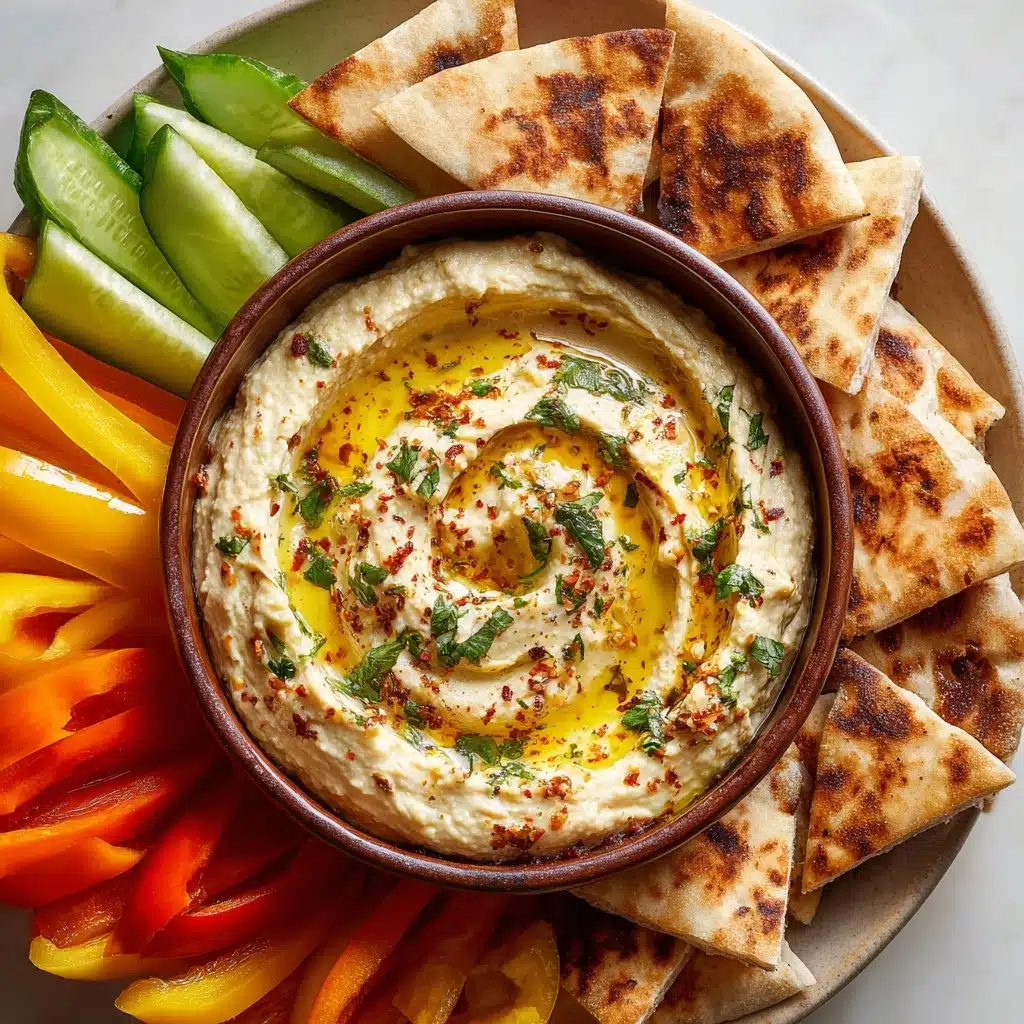
Garnishes
A swirl of olive oil, a cloud of paprika, and a confetti of chopped parsley are my go-to touches for Hummus. They don’t just look spectacular—they also add new layers of flavor and aroma. Want more flair? Try toasted pine nuts, sumac, or a sprinkle of sesame seeds for a fun twist!
Side Dishes
Hummus is a wonderful anchor for a vibrant snack platter. It’s perfect alongside warm pita wedges, crisp cucumber or carrot sticks, halved radishes, or even grilled flatbread. I love tucking it next to tabbouleh or roasted veggies for a light Mediterranean meal. The options are endless, really.
Creative Ways to Present
Take Hummus beyond the basic dip—spread it onto toast, use it as a layer in wraps, or dollop onto grain bowls. Layered Hummus platters with roasted red peppers or marinated olives add a stunning centerpiece to any gathering. For parties, consider serving in individual cups topped with crunchy veggies for a fun, portable twist!
Make Ahead and Storage
Storing Leftovers
Leftover Hummus stores beautifully in an airtight container in the fridge, staying fresh and creamy for up to a week. Just make sure to drizzle a little extra olive oil on top before popping it in the fridge—it helps maintain that just-made flavor and texture.
Freezing
Surprisingly, Hummus freezes well! Portion it into small containers, add a little oil on top, and freeze for up to three months. Thaw it in the refrigerator overnight, stir, and enjoy—it might need a splash of lemon juice and an extra swirl for best flavor.
Reheating
Hummus is best served at room temperature. If it’s been in the fridge or just thawed, let it sit out for about 30 minutes before serving. A quick stir and drizzle of olive oil can help revive that luxuriously creamy texture.
FAQs
Can I use dried chickpeas instead of canned?
Absolutely! Cooked-from-scratch chickpeas give Hummus a next-level flavor and texture. Just soak them overnight, simmer until soft, and proceed as with canned. Peeling the chickpeas after cooking is the secret to extra smoothness.
How do I make my Hummus extra creamy?
The trick is patience and technique! Blending while slowly adding icy-cold water helps to aerate the dip, making it fluffy and silky. Peeling the chickpeas (simply pinch off the skins) also results in ultra-smooth Hummus.
Is Hummus healthy?
Yes! Hummus is packed with plant-based protein, fiber, healthy fats, and plenty of vitamins and minerals. It’s naturally vegan and gluten-free, making it a wholesome snack or lunch option.
Can I make Hummus without tahini?
You can, but tahini truly is essential for that signature taste. In a pinch, you might try substituting with unsweetened cashew or sunflower seed butter for a slightly different, delicious dip.
How long does homemade Hummus last?
Properly refrigerated, your homemade batch will stay fresh and tasty for up to 5 to 7 days. Just always use a clean spoon to avoid introducing any bacteria and keep the texture at its best.
Final Thoughts
If you’ve been craving the perfect dip or a creamy snack that everyone will rave about, it’s time to make Hummus from scratch! With just a handful of pantry staples and a single whiz of your food processor, you’ll be amazed at how much flavor you can create right at home. Go ahead—your next favorite recipe is waiting.
Print
Hummus Recipe
- Total Time: 10 minutes
- Yield: 8 servings 1x
- Diet: Vegan
Description
Learn how to make delicious homemade hummus with this easy recipe. Creamy and flavorful, this classic Middle Eastern dip is perfect for snacking or as a spread.
Ingredients
For the Hummus:
- 1 (15-ounce) can chickpeas, drained and rinsed
- 1/4 cup fresh lemon juice (about 1 large lemon)
- 1/4 cup well-stirred tahini
- 1 small garlic clove, minced
- 2 tablespoons extra virgin olive oil, plus more for serving
- 1/2 teaspoon ground cumin
- 2 to 4 tablespoons cold water
- Salt, to taste
For Garnish (Optional):
- Paprika
- Chopped fresh parsley
Instructions
- Blend Ingredients: In a food processor, combine chickpeas, lemon juice, tahini, garlic, olive oil, cumin, and salt. Process until smooth, scraping down the sides as needed.
- Add Water: With the processor running, add cold water 1 tablespoon at a time until desired creamy consistency is reached.
- Adjust Seasoning: Taste and adjust seasoning as needed.
- Transfer and Garnish: Transfer hummus to a serving bowl, drizzle with olive oil, and garnish with paprika and parsley if desired.
- Serve: Enjoy with pita bread, veggies, or as a spread on sandwiches.
Notes
- For extra smooth hummus, peel the chickpeas before blending.
- Store in an airtight container in the fridge for up to a week.
- Prep Time: 10 minutes
- Cook Time: 0 minutes
- Category: Dip
- Method: No-Cook
- Cuisine: Middle Eastern
Nutrition
- Serving Size: 2 tablespoons
- Calories: 80
- Sugar: 0g
- Sodium: 90mg
- Fat: 5g
- Saturated Fat: 0.5g
- Unsaturated Fat: 4.5g
- Trans Fat: 0g
- Carbohydrates: 7g
- Fiber: 2g
- Protein: 2g
- Cholesterol: 0mg
